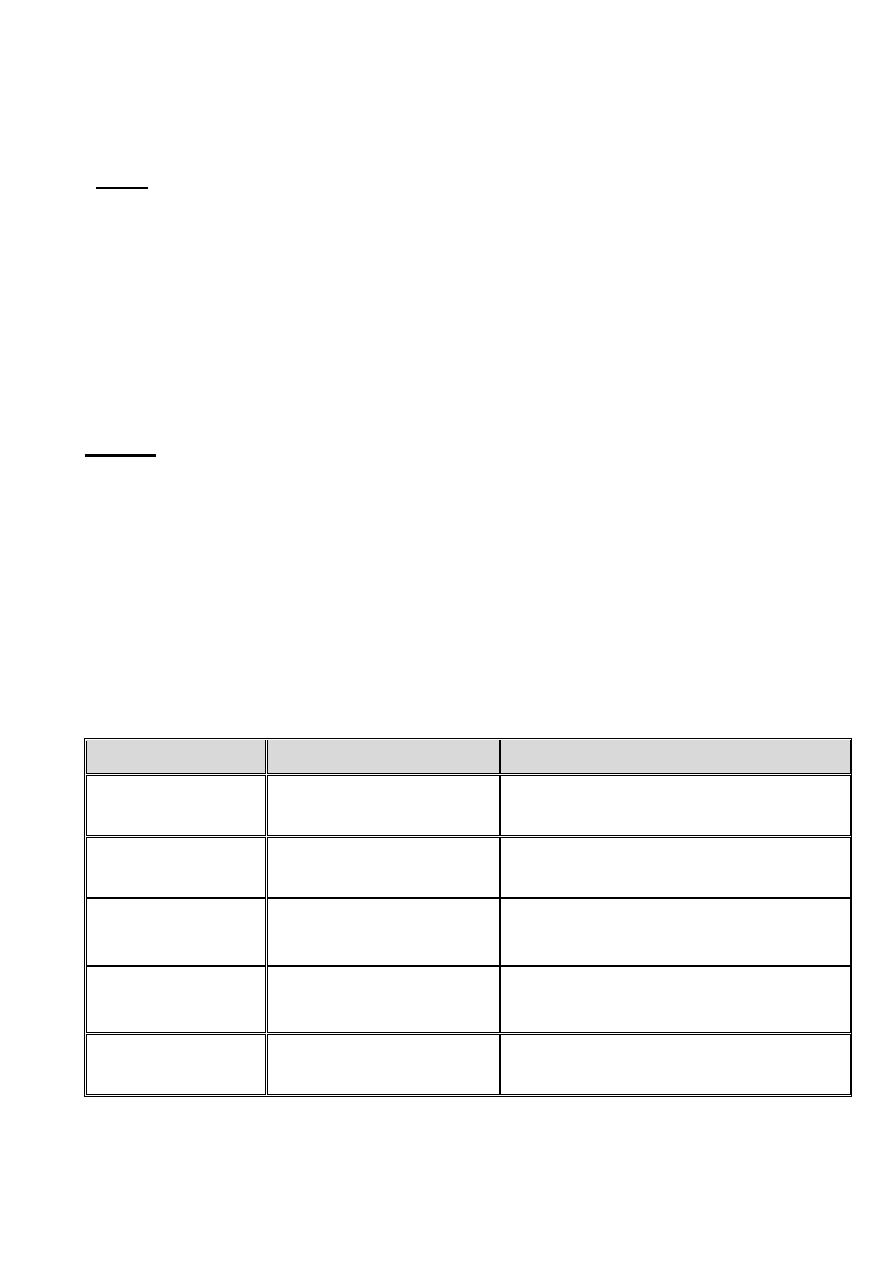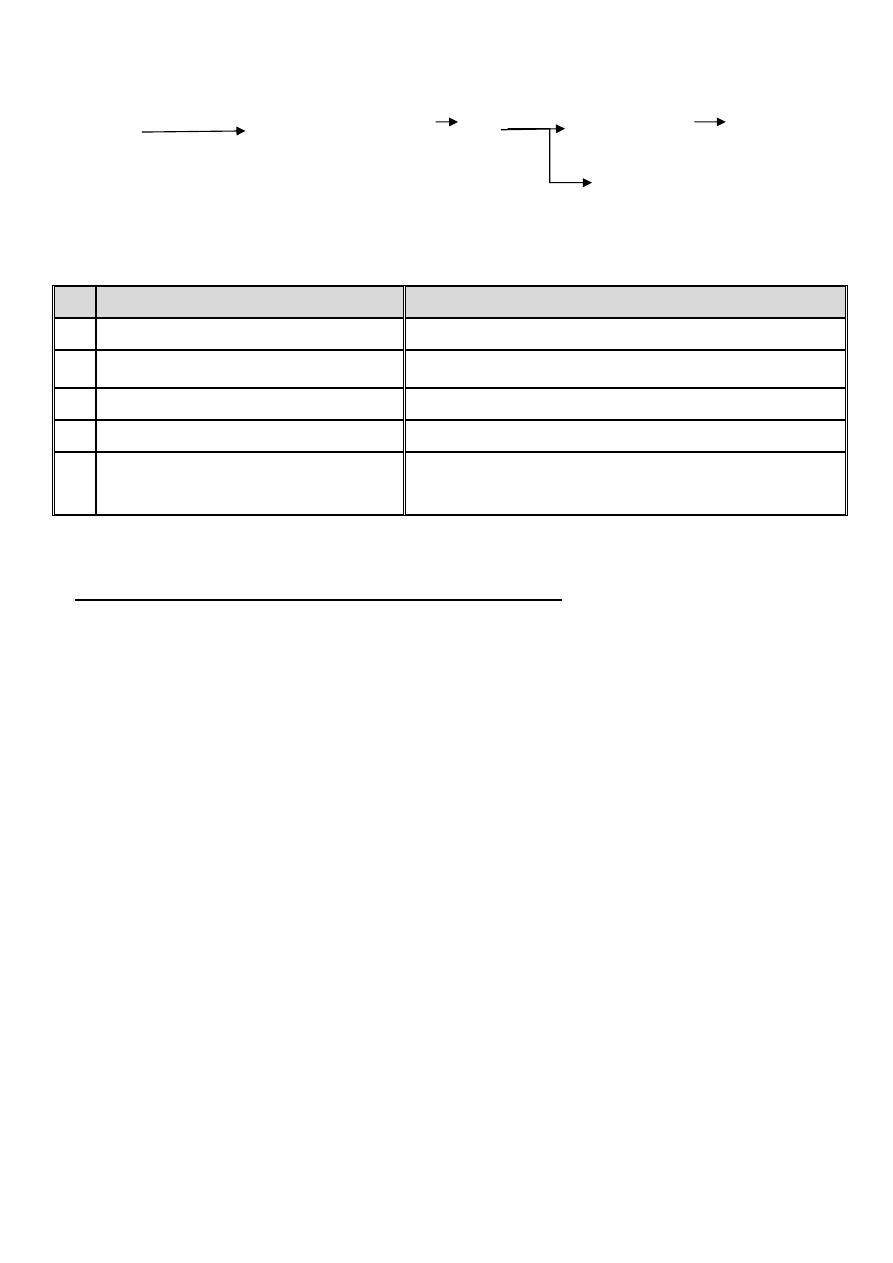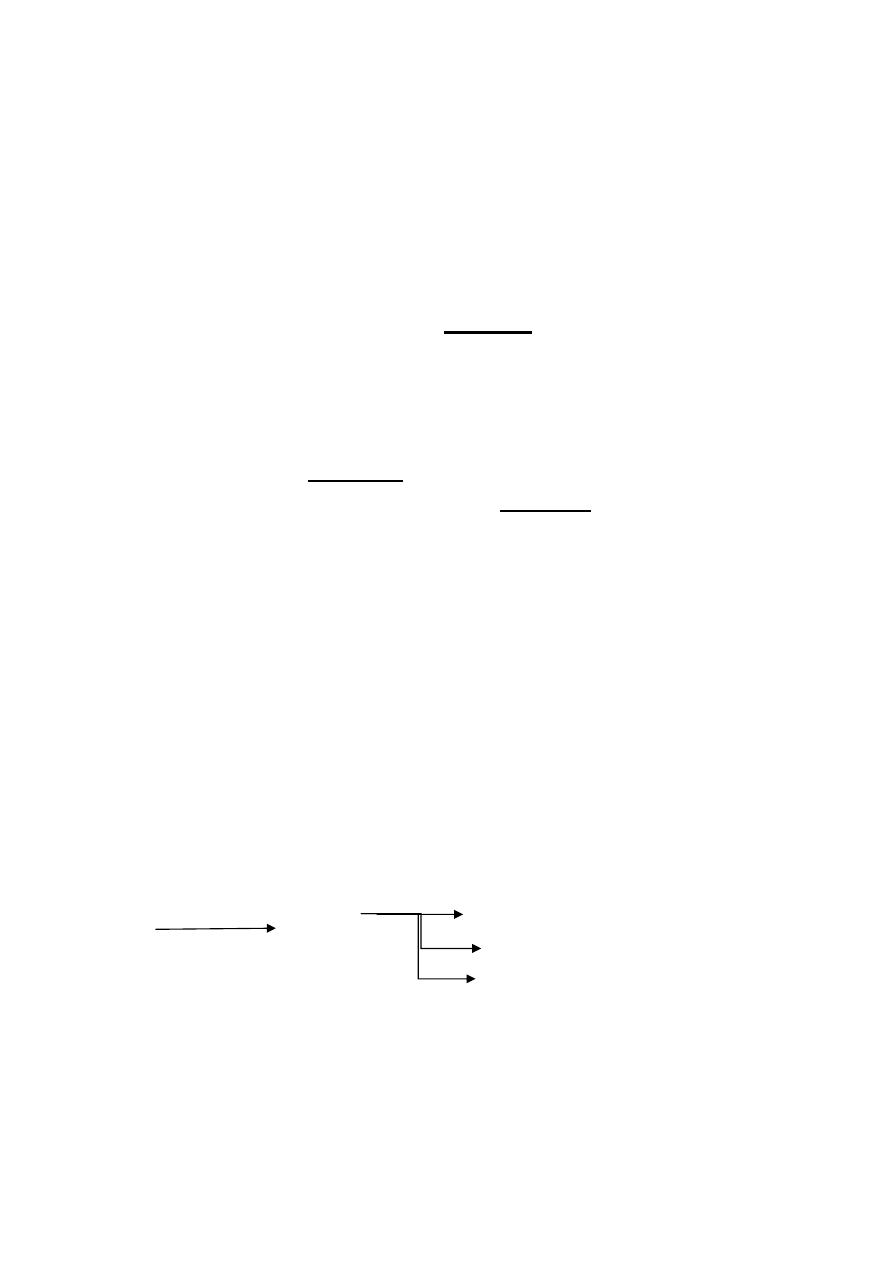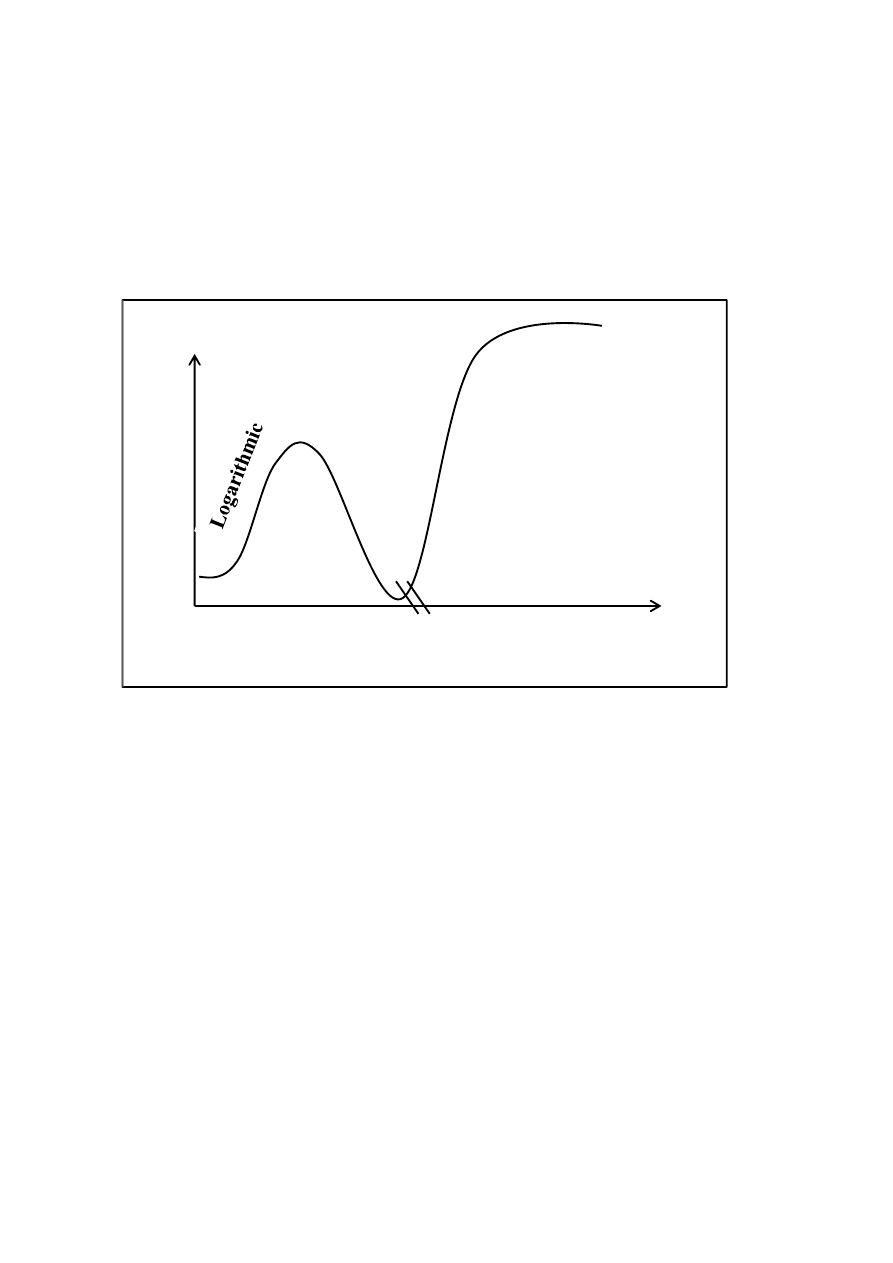
1
Course: Immunology
Lecturer: Dr. Weam Saad
Lecture: Specific Immunity (HMI and CMI), Primary and Secondary Immune Response.
B and T cells Biology, Activation, Immunological role in
HMI and CMI.
Cells involved in specific immune responses:
1) Antigen Presenting Cell (APC): These cells are the messengers
between innate (non-specific) immunity and the adaptive (specific).
Specialized APC are macrophage (MØ), B-cells and Dendric cells
(DC).
Roles of Antigen Presenting Cell (APC):
1. Engulfment of foreign Ag, processing it and presenting it (or a polypeptide
from it) on the surface near the Major Histocompatibility Complex MHC class
I or II.
2. Communication during the immune response between immune cells especially
T- cells to induce the proper immune response cellular or humolar.
3. Secretion of cytokines which are substances (glycoproteins) that regulate the
immune response.
2) Lymphocytes:
The immune system depends on the Lymphocytes:
B-cells or B-lymphocytes.
T-cells or T-lymphocytes.
Natural killer cells (NK).
B-cells are responsible for Antibody mediated immunity (Humoral immunity
HMI). And T-cells are responsible for cell mediated immunity (cellular
immunity CMI).
In addition to MHC classes, each T-lymphocyte has surface molecules to give the
cell identity:
1- Clusters of Differentiation (CD): They are major surface markers (Ag) of T-
cells, T-cells are classified according to the presence of these CD marker:

2
T helper cells: CD3
+
CD4
+
CD8
-
T cytotoxic cells: CD3
+
CD4
-
CD8
+
Note: NK cells have no CD markers on the surface so they are usually called null
cells.
2- T-cell Receptors (TCR): they are proteins on the T-cells surface represent
the places (or regions) of binding to the presented Ag on the APC surface.
TCR is the accessory (help) of CD4
+
(T-helper) and CD8
+
(T-cytotoxic) cells
during recognizing foreign Ag presented near MHC and increase the storage
of binding. TCR and CD3 is usually called TCR- complex.
NOTE: B-cells are able to be APC by internalization of Ag inside the cell and do
the processing and presenting, which will be discussed later.
Dendric cells: cells found only in mammalian immune system; their function is to
engulf and process Ag then presents it on the surface to other immune cells. Found
in tissues that in contact with external environment such as skin, lung stomach and
intestine. Their name comes from their branches projects.
Differences between B and T cells
Properties
B-lymphocyte
T-lymphocyte
Site of maturation Bone marrow (bursa in
chickens)
Thymus
Surface markers
Immunoglobulins
CD markers(clusters of
differentiation)
Product after Ag
stimulation
Plasma cells which
secrets Abs
Sensitized T-cells
General function
Abs production and
APC
Regulating (Helping or suppressing)
immune response and CMI
Types
No types
T-helper, T-cytotoxic and T-
suppressor

3
Types of Lymphocytes and their functions
Lymphocytes
Surface
Markers
Function
T helper cells (Th)
CD3, CD4 Help other cells T and B in their function
Cytotoxic T cells (Tc) CD3, CD8 Kill and lyse target cells that express foreign
Ag (cell contain intracellular pathogen or
tumor cells).
T suppressor cells (Ts) CD3, CD8 Inhibit the immune function of other
lymphocytes
T memory cells
---------
Long live cells recognize Ag of first cellular
immune response.
B lymphocytes
Ig
Differentiate to plasma cells, which produce
Abs against Ag.
Plasma cells
Ig
Secrete Abs.
B memory cells
Ig
Long live cells recognize Ag of first
humoral immune response.
Natural killer cells(NK)
---------
Kill and lyse target cells that express foreign Ag.
NOTE: When Ag succeeds to inter the body; the results of the invasion can be
the followings:
Dose of Ag is not enough or the Ag is hapten:
1. No response or Tolerance occurs, when the immune system do not
response to the Ag.
2. Phagocytosis and complement activation leading to non-specific
immune response against without memory.
Enough Ag dose (complete Ag):
The Ag induces a specific immune response against it (either CMI or
HMI) and memory to remember the same Ag next time. Induction of the

4
immune response depends on: Ag dose, Ag type, Immune system health,
genetic factors and control.
Major Histocompatibility MHC
They are genes encoding for proteins found on the surface of all human
and animals cells. They have an important role in giving the identity of the cell
and in the communication with the immune system cells and regulation of
immune response:
MHC class I: found on the surface of all nucleated cells, have role in tissues
and organs transplantation.
MHC class II: found on the surface of all immune cells especially APC.
MHC class III: found on the surface of certain cells for some complement
components receptors.
Cytokines: proteins produced by many cells act as mediators between cells
and regulate other cells function. They include:
1. Monokines, cytokines produced by mononuclear phagocytic cells.
2. Lymphokines, cytokines produced by activated lymphocytes, especially
Th cells.
3. Interleukins (IL-), cytokines that act as mediators between leukocytes.
4. Interferons (IFN-), cytokines that play a major role in the innate
immunity.
NOTE: Interferones have many types α, β and γ.
IFN-γ: Is the immune interferone, it is antiviral protein, produced from T-
cells and MØ and activates monocytes and MØ.

5
Antibody mediated Immune Response
(Humeral Mediated Immunity, HMI)
1. The name Humoral came from the old Greek word (humor) mean
fluids.
2. The products of this specific immune response is specific Abs (able to
react with the same Ag started the immune response) and memory B-
cells.
3. HMI starts with B-cell activation:
B-cells have normal Ag receptors on the surface they are natural Igs,
these Igs are able to form Ag-Ab complex on the surface of B-cell.
This complex will be internalized inside B-cell, then the foreign Ag
will be processed within B-cell and presented (or polypeptides from
it) on the surface of B-cell near MHC class II and now B-cell is APC.
T-helper (Th) cells come near the APC B-cell and by the help of
TCR and CD4; Th will interact and communicate with APC B-cell
and Th cell will be activated and release cytokines or lymphokines
(IL-2, IL-4, IL-5 and IFN-γ), these products will induce other B-cells
for dividing, proliferation and differentiation. IgM will be the first Ig
produced then B- cell will switch to make IgG. This response is called
T-dependent Ag immune response. The other type of response is T-
independent Ag immune response, this type of Ag stimulates B-
cells without need for T-helper lymphocytes interfere.
4. After B-cells activation, series of events happen (proliferation, clonal
expansion, division and maturation), ending with Ab and memory B-
cells production. These series of events called B-cell Maturation.
5. During the second exposure to the same Ag that started the first
immune response (perhaps after year from first exposure), the B-
memory cells will remember the Ag and will be activated and divide
into a clone of plasma cells to start the Secondary immune response
(Memory response).

6
Th IL-1 Th (self activator) HMI plasma cells Ab
B cells
Differences between T-dependent Ag and T-independent Ag
No.
T-dependent Ag
T-independent Ag
1
Strong response
less
2
need T-cell interaction
Stimulate and activate B-cells directly
3
protein mainly
Lipids ( LPS) or polysaccharides (capsules)
4 produce IgM then switch to IgG
produce IgM only
5
Produce B-memory cells
Do not produce B-memory because there is no
cytokines in this response
Interleukins involved in specific immune response:
IL-1 ------Source: (Monocytes, Macrophage, DC, NK, B-cells)
Action:
1. T-cells activation by induce IL-2 production.
2. Induce B-cells differentiation and maturation.
3. Induce NK cytotoxicity.
4. Inflammation and fever.
5. MØ activation.
IL-2 ------ Source: (T- helper cells)
Action:
a. Induce proliferation of activated T and B- cells.
b. Induce Tc and NK cytotoxicity to kill tumor cell and bacteria.
c. Activation of monocytes and macrophage.

7
Cell mediated Immune Response
(Cellular Mediated Immunity, CMI)
This response occurs against cells, which are called Target cells. During
both HMI and CMI, T-helper cells recognize foreign Ag processed on the
surface of APC. If this Ag was processed and presented near MHC class II,
then Th cells will activate HMI by B- cells activation, but if the presented Ag
on APC was near MHC class I, then Th cells will activate CMI by activation
of Tc, NK and MØ. Th cells able to activate and regulate CMI and HMI by
many cytokines production.
In addition, in both CMI and HMI, when Th cells recognize the foreign
Ag, Th cells will start T-cells activation by series of events (expanding,
clonal proliferation and differentiation), then become mature to give specific
activated T-helper cells in HMI and give specific activated T-helper cells and
memory T-cells in CMI.
Types of CMI response:
1. Defense against Tumor cells or cancer cells. Target cell is the cancer cells.
2. Grafts Rejection: Immune response against foreign cells or tissues that
transplanted from other body even of the same species. Target cell is the
foreign cells.
3. Defense against Mutation affected cells: defense against modified body cells
or mutated cells with different surface Antigens due to radiation or chemical
agents exposure. Target cell is the mutation cell with new Ags.
4. Defense against Intracellular parasite infected cells: Cellular immune
response against infected cells with intracellular parasite (virus, bacteria,
fungi and protozoa), with foreign Ag presented near MHC class I. Target cell
is the infected cell with parasite.
5. Types 4 hypersensitivity (Delayed type of hypersensitivity
by the action of
T
DTH
a type of cytotoxic T-cells).
Target cell is the same body cells with
immunocomplex precipitated on the surface.

8
Cells involved in this response:
1. Antigen Presenting Cell (APC): The most common APC in CMI are
dendric cells DC, which act as APC. These cells process small parts of
intracellular parasite body if the DC Dendric cell was infected with it or if it
dies spontaneously and during clearing process in the site of infection.
2. T-cell types:
A. T-helper cells (Th):
1) Have central role in activation of this system by recognizing foreign or
abnormal cells (have abnormal, modified, or intracellular parasite Ag).
2) Responsible for the production of cytokines to induce other cells and
regulates the immune response.
B. Cytotoxic T- cells (Tc): These cells are responsible for killing and lysing
target cells, hence sometimes they are called killer cells.
C. Natural Killer (NK) cells: These cells are responsible for killing and
lysing target cells. These cells are called natural killer because they have non-
specific receptors for Ags.
3. Macrophages: Have role in killing target cells, killing intracellular
parasite inside MØ and production of cytokines (monokines) for other cells
activation and regulation of functions.
Activation of CMI cells:
When T-helper cells recognize foreign Ag on the surface of target cell in
association with (or near) MHC class I. The TCR and CD4
+
play role in
recognition. Then Th cell will be activated and produce cytokines (especially
IL-2 and IFN- γ). These cytokines will activate Tc CD8
+
cells, MØ and NK
cells. This activation will increase these cells ability for killing and became
more effecter.

9
Mode of action for killing target cells:
After T-cytotoxic cells and NK cells activation by Th cells, T-cytotoxic
cells come into close contact with target cell; they will bind to the Ag by
their specific Ag receptors. While NK cells will attach to Ag (on Target
cell surface) by their non-specific receptors for Ag.
T-cytotoxic cells and Nk cells will kill target cells by the following
mechanisms:
a. Direct contact killing: Production of perforin, which is a protein able to
form pores in target cell membrane at the point of contact between Tc cell
and target cell, lead to osmotic lysis of target cell.
b. Indirect killing: By secretion of a toxin protein in the space between the
two cells, which causes fragmentation of target cell nuclear DNA, then the
death of target cell by Apoptosis: the programmed cell death.
c. Antibody-dependent cellular cytotoxicity (ADCC) killing: it is specific
mode of killing occurs when the parasites Ags have ability to induce both
HMI and CMI , target cells will be coated with specific Abs formed after
HMI against some parts of intracellular parasite like virus. These Abs will
bring Tc and NK cells very close to the target cell by acting like a bridge
because Tc and NK have receptors to the constant region of Ab. Then Tc
and NK cells will be activated and kill the target cell by extracellular
products (toxins and enzymes).
This type of CMI occurs when the foreign Ag persist for long time (e.g
Mycobacterium tuberculosis infection is long standing intracellular
infection), also, against some kinds of cancer cells.
Th IL-2 CMI Tc
NK
MØ
Primary immune response

10
It is the first exposure to the Ag resulting of forming specific Abs and
memory B-cells for HMI or T-cells and memory T-cells for CMI, the phases
are:
1. Latent Phase: start after first time exposure to an Immunogen or after
induction, include the followings:
No Ab level increase (titer).
Recognizing Ag as foreign after processing the Ag inside APC.
Cellular proliferation and differentiation.
Duration of this phase (period) is variable depending on many factors
(Ag immunogenicity, Ag dose, Ag solubility, Ag route of immunization
or exposure).
2. Logarithmic phase: starts when Ab titer begin to increase (active
biosynthesis of Ab), last for 10-14 days till reach peak.
3. Steady phase: starts when the rates of both formation (synthesis) and
catabolism of are equal, then serum concentration of Ab is constant.
4. Decline phase: starts when the Ab titer starts to fall down due to increase
Ab catabolism rate than synthesis.
Note: during early primary response, IgM class antibodies is predominant
and first rise than IgG appears later.
Secondary immune response
It is the second exposure to the same immunogen that induced the first
immune response (after booster dose of vaccination) may be after weeks,
months, or even years later, includes:
1. Accelerated or fast appearance of Abs.
2. Shorter latent period.
3. Rapid rate of Ab synthesis.
4. Higher peak titer of Ab.
5. More presence of memory cells.
6. Dose of immunogen needed is lower than primary.
7. Predominant Ab Class is IgG.
8. Long standing steady phase, whereas Ab titer will stay high longer time.

11
Negative phase: occur between primary and secondary Immune response
when immunogen second dose is small and/or there is pre-existing antibodies
from the first immune response (primary), then immunogen will be all
consumed in Ag-Ab complex formation and phagocytozed then removed
with no induction to secondary immune response.
(Primary and Secondary immune response)
Time
Primary Im. Re.
Secondary Im. Re.
A
b C
o
ncentr
a
ti
o
n
Laten
t
Steady
Decline
Negative phase
